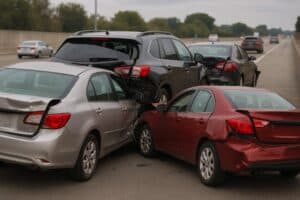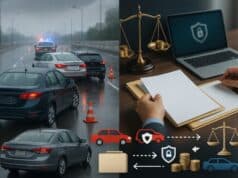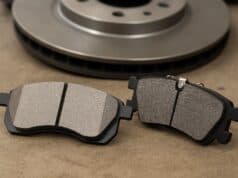Chain-reaction collisions are among the most complex cases in personal injury law. Unlike a straightforward two-car accident, these crashes involve multiple vehicles, layered responsibilities, and conflicting accounts of what happened. Determining who is at fault becomes a challenge not only for drivers but also for insurance companies and courts. That is why working with experienced Malman Law car accident lawyers in Chicago can make a significant difference. Their ability to analyze crash dynamics, review police reports, and piece together witness accounts helps ensure that injured victims are not unfairly blamed in these high-stakes cases.
Why Liability Is So Complicated in Chain-Reaction Collisions
When several vehicles collide in quick succession, liability rarely falls on just one driver. A sudden brake, a driver following too closely, or poor road conditions can all contribute to the sequence of impacts. Each driver’s actions are scrutinized to determine whether they worsened the situation, and untangling these details requires a careful, step-by-step approach.

In many cases, multiple parties share responsibility, but proving the degree of fault requires more than assumptions. It involves reconstructing the entire timeline of events, from the initial trigger to the final impact.
The Role of Evidence and Expert Testimony
Substantial evidence is the cornerstone of a chain-reaction collision case. Attorneys often rely on:
- Police reports that provide an official account of the crash
- Eyewitness testimony to clarify how the collision unfolded
- Accident reconstruction specialists who use physics and engineering to recreate the sequence of impacts
- Vehicle inspections to detect malfunctions or mechanical failures that may have contributed
Attorneys may also gather traffic camera footage, cell phone records, and roadway maintenance logs to fill in any gaps. This combination of documentation and expert analysis creates a clear picture of liability. Expert testimony, in particular, can help distinguish between the driver who triggered the initial crash and those whose actions were secondary, preventing victims from being unfairly held accountable.
How Attorneys Approach Multi-Car Collisions
Comprehensive Collision Analysis
Attorneys break down the sequence of events to determine the order of impacts, the role of each driver, and the conditions that contributed to the crash. Accident reconstruction experts may calculate speed, analyze skid marks, and review damage patterns to establish how the collision began.
Careful Review of Reports and Testimony
Police reports provide essential information, but they can sometimes contain gaps or misinterpretations. A trusted lawyer digs deeper by interviewing witnesses, comparing their statements with physical evidence, and building a consistent narrative that supports their client’s case.
Negotiating Complex Liability Structures
Insurance companies often try to push more blame onto victims in chain-reaction cases, especially when multiple claims are involved. Attorneys with experience in multi-car collisions push back by clearly demonstrating how fault should be divided. Malman lawyers are well-versed in negotiating these cases, ensuring their clients receive fair treatment and compensation for medical bills, lost wages, and other damages.
Advocating for Fair Compensation
Beyond proving liability, attorneys also focus on the full scope of damages their clients face. This may include immediate medical expenses, long-term rehabilitation, lost earning capacity, and the emotional toll of the accident. By presenting a comprehensive claim backed by evidence and expert opinions, lawyers help ensure victims are not left with uncompensated losses.
Final Thoughts
Chain-reaction collisions highlight just how complicated liability can become when multiple vehicles are involved. With several drivers, insurers, and legal questions in play, the risk of being unfairly blamed is high. By working with experienced Malman Law car accident lawyers in Chicago, victims gain advocates who carefully analyze evidence, challenge inaccurate claims, and fight to ensure responsibility is assigned reasonably. With the right guidance, you can protect your rights and pursue the compensation you need to move forward after a multi-car accident.





